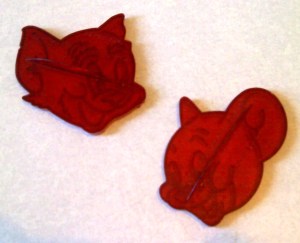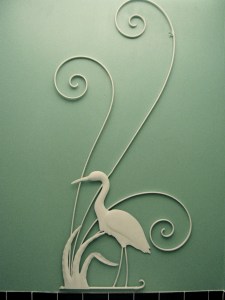 Pick-Let’s talk some more about the antique recycling in our home.
Pick-Let’s talk some more about the antique recycling in our home.
Grin-Does that mean you are finally going to clean out your clothes closet?
P-No, silly. I mean our “decorating recycling”, things we have saved from a dumpster or land fill by fixing it up and putting it to a good use. How about discussing our latest find-our Big Screen TV?
G-Well, that was your idea and it’s no wonder you want to tell everyone about it.
P-Well, as far as that goes, you have some bragging rights too. You negotiated the price and got us a super-deal. And you made the improvements! It sure is fun to tell our friends and family about our new TV set. They know we’ve just recently replaced our black and white set with a color TV. So, they are astounded when we make the announcement. Remember when our son-in-law asked if it was a “flat screen” and we responded with “it’s actually convex.” The look on his face.
G-So why don’t we tell the readers the whole story. It was your off-the-cuff comment while exploring an antique mall that prompted our purchase.
P-Oh, I remember walking into the booth and seeing the old Crosley cabinet – it was in great shape except no knobs or “guts” and I said you know what would look great in that 10” opening, a digital picture frame. You just left and went to the counter to have them contact the dealer, hopefully for a better price. I was not even aware that you were doing that, thinking you were not too thrilled with the concept.
G-The dealer accepted the offer and when we got it home, the work began.
P-Getting the right digital frame was the easy part, but I was a bit concerned about the hardware, especially the little light I recalled from TV’s of my youth.
 G-I knew I had knobs for a TV or radio cabinet downstairs. I do keep all of that stuff.
G-I knew I had knobs for a TV or radio cabinet downstairs. I do keep all of that stuff.
P-And you think I never throw anything out, right!
G-Even with all the junk I have, I could not locate a rotary on/off switch with a long enough neck to fit through the wood of this cabinet.
P-Now, come on. What about your box in the electrical section that reads “rotary switches-long necked.”
G-Very funny, that box was empty. Finally, at the third store I found a switch. It was the type of store that has even more useless things than I have. I also found a lens that fit into the hole for the indicator light. You should remember that it took such a long time for the tubes to warm up and the indicator light let you know it was turned on.
P-That’s WAAAAY before my time, but I do know that you have a built-in indicator that tells me when you are warmed up. I do remember mom sending me in to start it up before the Friday Night Fights came on.
G-Was that any time when your rowdy family got together?
P-You are such a hoot!
G-Our last step was downloading pictures of family and friends and then we were set to turn it on.
P-It worked great but something was missing. To make it look authentic, we needed a 1950s TV lamp.
 G-And no TV from that time frame would work without an antenna. We city dwellers would use rabbit ears that could be adjusted to pick up BOTH TV stations.
G-And no TV from that time frame would work without an antenna. We city dwellers would use rabbit ears that could be adjusted to pick up BOTH TV stations.
P-Will we also need aluminum foil for the top of the ears? I think you still have a ball of foil from the “war drive.”
G-What war was that, One or Two? Back to our project. We easily found several TV lamps from that time period and the antenna was spotted at an estate sale.
P-It’s now complete, even have a doily that your mom made to finish it off. And when our son-in-law, the one with the mega-screen saw it, he laughed out loud, but I think I saw a bit of “screen-is-envy” there.
G-You have always been so classy. You are a work in progress too, but good fun. It’s always great to work on projects with you.
P-Back Atcha!
Tip for IV’s Collectors: Unlike regular retail establishments, most antique stores and malls have a level for discounting the price. Be sure to ask at the counter when shopping what is the stores discount policy. If an item is very expensive, you just might be able to negotiate by asking the mall personnel to contact the dealer. They often comply if you have an offer you’re willing to pay.

















































































